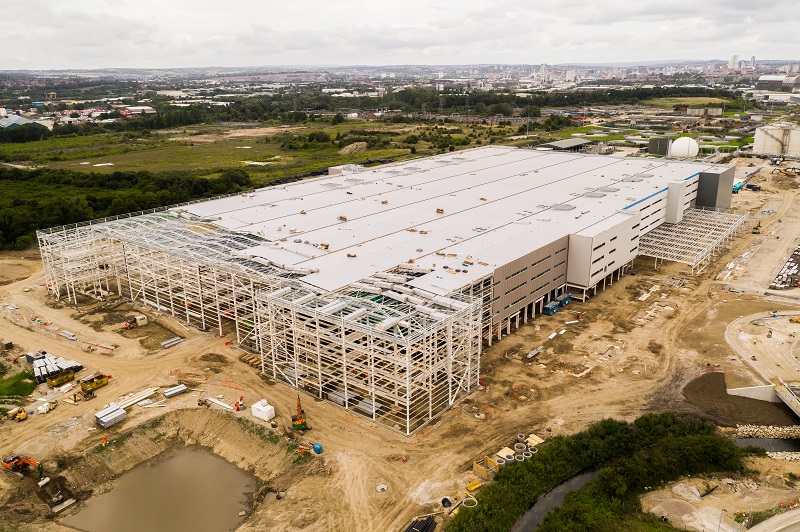
Planning a New Warehouse? Don’t Delay The WMS!
Many warehouse operators moving into a new facility plan to upgrade their warehouse management system, (WMS), simultaneously. But even when they have identified the requirement and made the business case, many choose to defer their implementation until the new facility is up and running. Is this the correct choice or are there advantages to committing to the WMS at an earlier stage
“There are pros and cons to each approach but I believe the main consideration should be the length of time until the new facility is completed,” says Joe O’Shea, Director at Principal Logistics Technologies. “Every operation is different but for me the rough rule of thumb is if the opening is more than 12 months away, deploy the WMS in the existing facility and then transfer it to the new one when it is ready.”
One of the main arguments for this approach is that it allows the warehouse operator to take advantage of new and advanced warehouse features right away while using the interim period to bed in the new system and prepare for operations at the new facility. That should help deliver the maximum benefits, gains, and efficiencies in the new warehouse from day one. So, what are the key considerations in the process?
Alignment of Resources to Key Dates: committing to implement the new WMS earlier in the process allows for easier and better alignment of resources to key required dates. The WMS supplier will be able to advise on the best approach and allocate their resources to support the warehouse operator to meet its targets and objectives.
Pressure on Launch: opening a new facility presents many and varied operational pressures including physical stock moves, staff transfers, installing new equipment, dealing with building snags, and so on. This is not unlike moving house but with added stresses and challenges. In short, there is enough going on without adding more pressure by introducing the new WMS at the same time.
Labelling of Stock for Initial Stock Build Up and Receipting: the conventional reaction to the point about launch pressure is to wait until afterwards. However, having the WMS live in advance offers the potential to label stock as it arrives in the old facility. Deploying a WMS after the move could mean relabelling is required which often requires additional time-consuming and costly stock handling operations simply to apply the new labels.
Staff Training: new and existing employees can be shown how to use the new system before moving to the new site and any changes in processes and tasks can often be introduced incrementally. This avoids the “big bang” approach of introducing a new system into an unfamiliar site which can make the transition smoother and less overwhelming.
Data Accuracy: entering or transferring data into the new system is usually straightforward. However, checking and cleaning the data beforehand will remove anything that is unnecessary and redundant. Doing this before moving to the new facility ensures data accuracy and inventory management are optimised from the get-go, leading to better performance from the new system with improved decision-making and fewer errors.
Immediate Efficiency Gains: implementing a new WMS right away should lead to immediate improvements in inventory management, order accuracy, and overall operational efficiency. It also leads to improved customer service (and enhanced KPIs) while there should be fewer issues when moving into the new facility.
Remove Duplication of Migration Tasks: one of the biggest reasons given by operators for not moving forward is that it requires ‘double the implementation effort’ but this is simply not the case. In reality, physical server moves (or resetting an IP address for hosted solutions), new wireless infrastructure, and so on are effective plug and play issues even if they do need rigorous testing. Similarly, solution design, configuration, and build along with data import, integration with equipment and other applications, testing, training, and go live support are among the many additional tasks that must be completed successfully. But ultimately migrating a WMS is a fractional subset of these and the benefits far outweigh any possible additional costs.
Missed Optimisation Opportunities: anyone lucky enough to design or build their own house will know that they learn from the experience and only afterwards recognise where they missed opportunities. The same is true of a new WMS. Deploying earlier allows those missed opportunities and gained insights to be re-engineered into the new system when the operation transfers to the new facility.
“A successful WMS deployment takes significant effort but for the reasons above I’d strongly recommend starting now if your facility is more than 12 months from completion,” says Joe O’Shea. “You can deploy, learn, adapt, and train so that you can apply this knowledge and understanding to the very first stock intake of your new facility. And avoiding duplication of tasks and effort before and after the move can save considerable time and money.”
Comments are closed.
